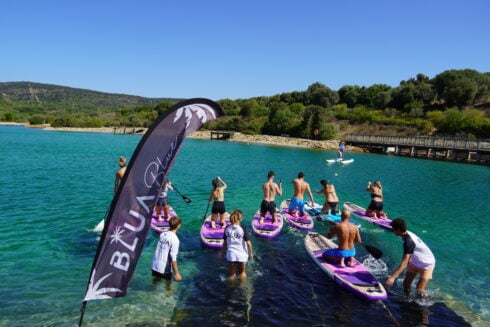THEY might be the ultimate symbol of summer freedom – but doctors are warning that flip-flops could be wrecking your body, from your feet to your spine.
Orthopaedic and podiatry specialists in Spain have sounded the alarm over the explosion of injuries linked to flimsy summer footwear, saying the nation’s love affair with the beach shoe is leaving holidaymakers in agony.
“Footwear without proper support or cushioning increases the risk of ankle sprains, falls and even fractures – especially on uneven or slippery surfaces,” explained Dr Francisco Rodriguez Argaiz, head of Orthopaedic Surgery and Traumatology at QuironSalud Marbella Hospital.
More than just sore feet
At first glance, flip-flops seem harmless. But prolonged or inappropriate use can trigger a cascade of problems – from stabbing pain in the soles, to strained muscles, tendon injuries and inflamed joints.
“If someone already suffers from plantar fasciitis, for example, they’ll need a much more specific type of sandal than a flat beach flip-flop,” added Javier Escolar, head of the hospital’s podiatry unit.
And the pain doesn’t stop at the toes. “The trouble is when people wear them for everything,” Escolar said. “Thin-soled flip-flops should only be used on the beach. For walks or longer outings, you need a thicker sole and good grip. If the foot is held in properly, even better – otherwise the strain can climb up to the knees and even the back.”
Middle-aged and older people are at particular risk, doctors warn, as natural flexibility in muscles and joints declines with age.
What about espadrilles and summer slip-ons?
Not all casual summer shoes are a disaster. Espadrilles and fabric slip-ons can be worn safely if your feet are healthy. But Escolar cautions: “Not all footwear suits all people. And if you need prescribed insoles, don’t take a holiday from them. They should be worn as much as possible in summer too.”
The cream mistake everyone makes
Doctors also shared tips to help feet survive the season. First rule: choose flip-flops with a supportive sole that actually holds the foot. Walking barefoot on soft sand can also strengthen muscles – “the best is when the foot sinks into the sand,” Escolar noted.
But when it comes to preventing blisters and cracked heels, hydration is key – and many of us are doing it wrong.
“Very few people know this, but the best way is to apply cream and let it dry,” said Escolar. The widespread habit of putting on socks after moisturising is a big no-no. “That just macerates the foot. It creates a damp dehydration, and once it dries out, the skin cracks.”
A growing health warning
As Spain bakes through another scorching August, the country’s top private healthcare group, QuironSalud, says cases linked to flip-flop misuse are rising sharply. The hospital network – which operates seven centres in Andalucia and 57 across Spain – is warning holidaymakers not to underestimate the risks.
So next time you slip on your trusty beach shoes, remember: flip-flops might be comfy, but they could also be quietly crippling you.
For more information, please visit www.quironsalud.com/marbella or call
+34 952 774 200
Click here to read more Health News from The Olive Press.








